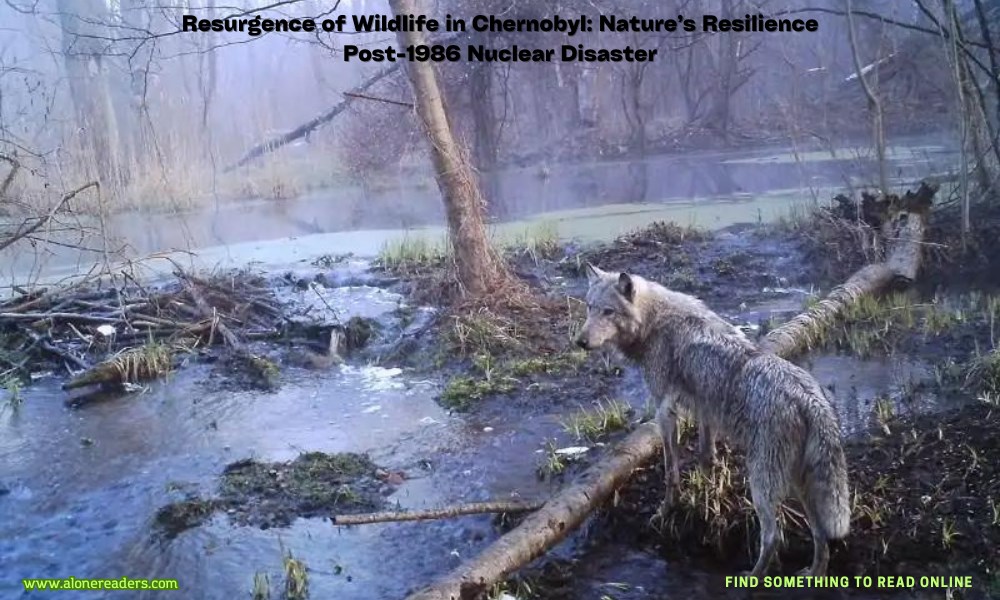
In the early morning hours of April 26, 1986, the Chernobyl Nuclear Power Plant in Ukraine experienced a catastrophic meltdown that would go down as one of the worst nuclear disasters in history. The immediate aftermath was devastating, with widespread environmental damage and severe human suffering. However, in the decades following the disaster, the 30-kilometer radius around the reactor, known as the Chernobyl exclusion zone, has become a de facto nature reserve. This area, once bustling with human activity, has witnessed a surprising resurgence of wildlife, offering a fascinating case study of nature's resilience.
Following the evacuation, the Chernobyl exclusion zone was left largely abandoned, save for the occasional presence of scientists, security personnel, and illegal tourists. With the absence of human disturbance, nature began to reclaim the area. Forests, marshes, and rivers slowly healed, and wildlife started to return. Initial reports in the years following the disaster suggested only a grim ecological future; however, subsequent studies and observations have painted a more complex and hopeful picture.
Scientists and ecologists have documented the return and thriving populations of several wildlife species in the exclusion zone. Large mammals such as wolves, wild boars, and even European bison have been spotted in increasing numbers. The wolf population, in particular, has flourished remarkably, with researchers estimating that the zone now hosts several times the density of wolves found in surrounding, non-radioactive reserves. This boom can be attributed to the lack of hunting, trapping, and competition with humans for space and resources.
Bird life has also seen a resurgence. Species like the black stork and the eagle owl, both of which are generally sensitive to human activity, have established strong presences in the area. Moreover, the Przewalski's horse, an endangered species of wild horse, was introduced to the zone and has been successfully breeding and increasing in numbers. These examples underscore a broader ecological phenomenon: given space and freedom from human pressures, wildlife can recover and even expand.
The resurgence of flora and fauna in Chernobyl also provides crucial insights into how ecosystems respond to nuclear contamination. Remarkably, many species appear to have adapted to high radiation levels. Research indicates that some organisms, like certain fungi and bacteria, have developed mechanisms to not only tolerate but utilize radiation, a process that could offer valuable insights into bioremediation — using living organisms to heal polluted environments.
However, it’s essential to note that the recovery of wildlife in Chernobyl does not imply that the area is free from the shadows of nuclear fallout. Radiation levels in many parts of the exclusion zone remain too high for safe human habitation, and its effects on wildlife at the genetic level are still a subject of ongoing research. For instance, studies have shown increased rates of mutation and poorer health in some species compared to those in uncontaminated areas. These findings suggest that the full impact of the disaster on the ecosystem is complex and not entirely benign.
The story of Chernobyl's wildlife recovery is a poignant reminder of the resilience of nature. It underscores the capacity of ecological systems to rebound, yet it also poses important questions about the long-term health of ecosystems subjected to such severe stressors. The Chernobyl exclusion zone serves as a natural laboratory for studying the impacts of radioactive contamination and the processes of ecological recovery. It also acts as a stark reminder of the long-lasting impacts of human technological failures.
In conclusion, the resurgence of wildlife in Chernobyl's exclusion zone is a testament to the enduring power of nature to overcome even the most daunting challenges. It provides valuable lessons on the resilience of ecosystems and the potential for natural recovery in the absence of human interference. As we continue to study and learn from Chernobyl, it remains a critical example of hope and regeneration in the face of disaster, reminding us of the robust yet delicate balance of life on Earth.